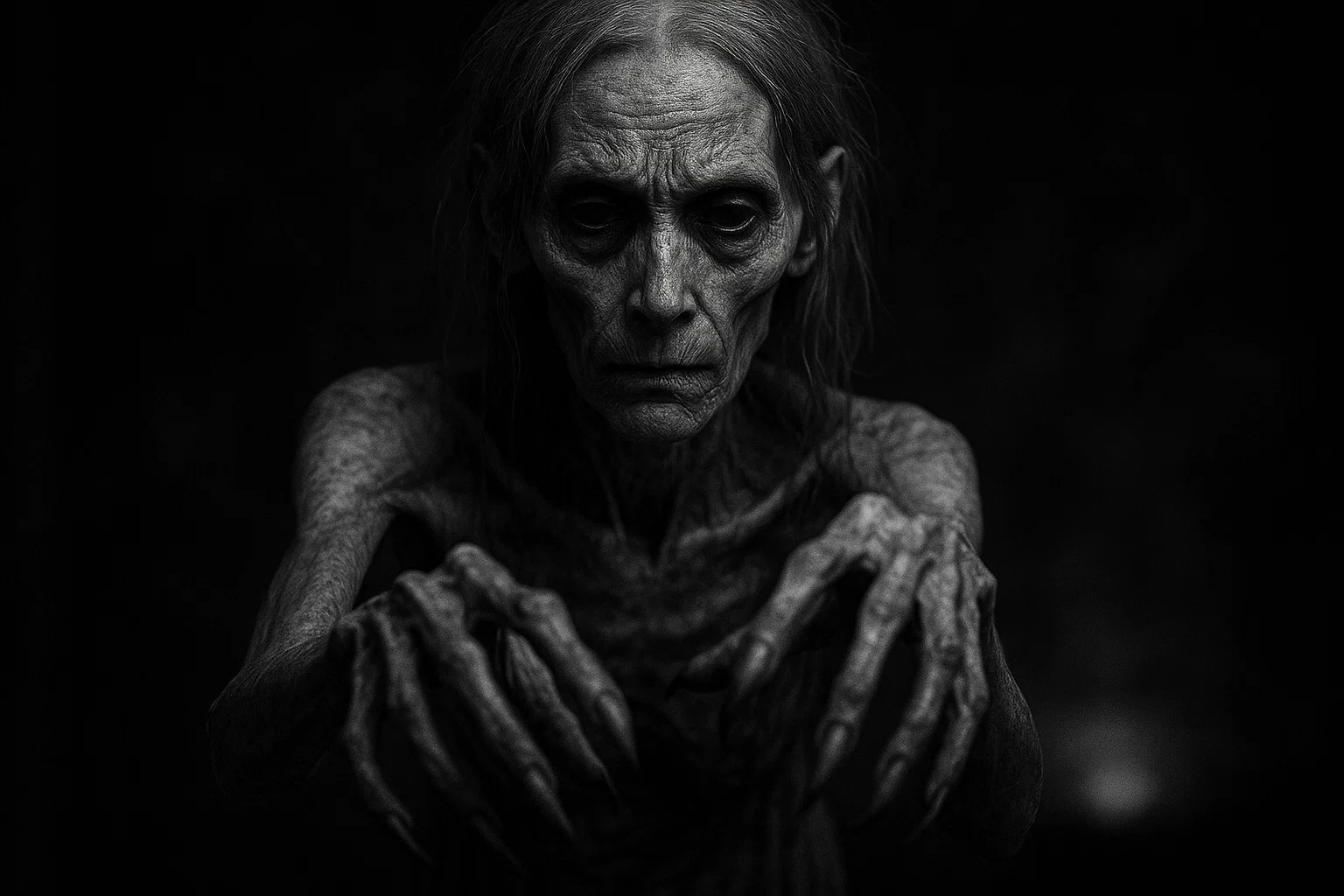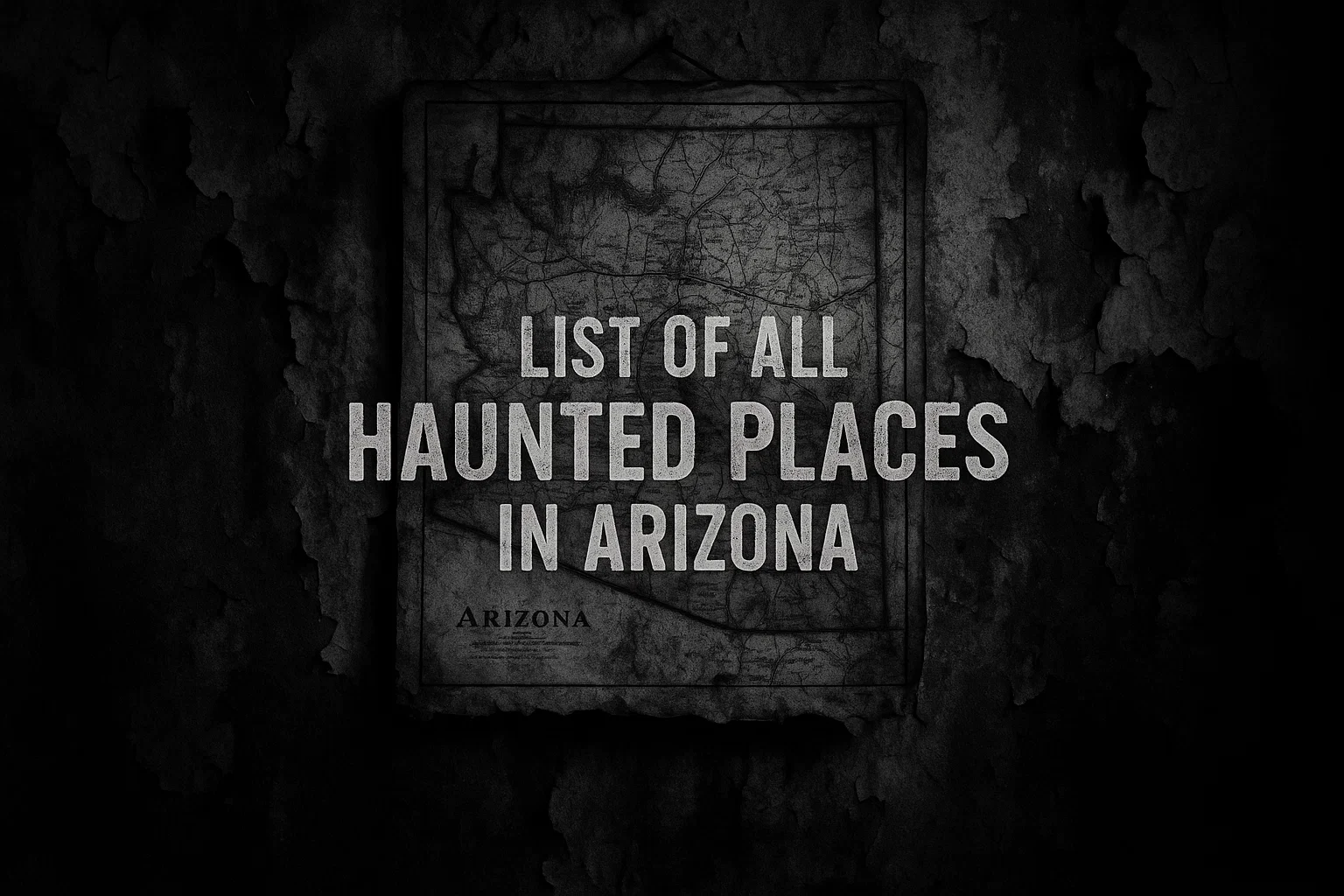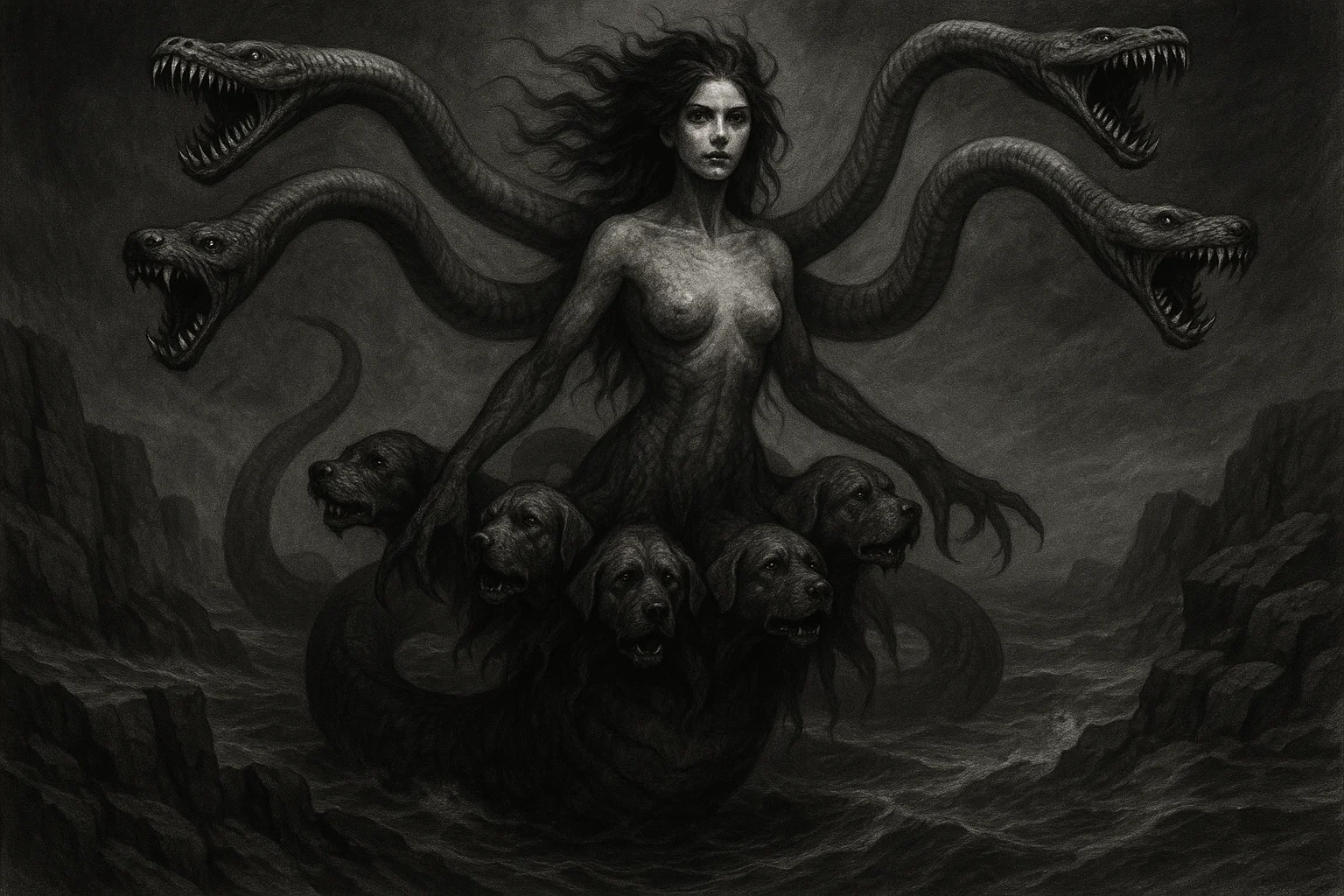Bushyasta is a malevolent force embodying the subtle decay of human resolve. This daeva of idleness, with her long-reaching grasp, personifies the creeping temptation to forsake duty, drawing the faithful into a vortex of stagnation and spiritual ruin.
As a hypostasis of laziness, Bushyasta‘s influence permeates the nocturnal hours, whispering delays that erode the foundations of righteousness, making her a timeless emblem of the soul’s quiet surrender to inertia.
In Zoroastrian demonology, Bushyasta reveals herself not through cataclysmic fury, but through the insidious erosion of vitality—a demon whose corruption manifests in forgotten prayers and unfulfilled potential.
Her presence in sacred texts underscores the perpetual battle against sloth, where procrastination becomes a gateway to greater evils, aligning her with the broader pantheon of daevas opposing Ahura Mazda’s divine harmony.
Summary
Key Information
| Category | Details |
|---|---|
| Name | Bushyasta (Avestan: būšyāsta, būšiiąstā); Bushasp (Middle Persian); Busyasta (alternative spelling); Buyasta (variant); The Long-Handed; The Yellow One; The Gaunt Daeva; The Slothful One |
| Title | The Long-Handed; The Gaunt One; The Depriving; The One Who Frustrates Prayers; Demon of Sloth; Daeva of Idleness; Hypostasis of Laziness; The Lethargic Fiend; Overseer of Procrastination |
| Gender | Female |
| Role | Angra Mainyu (Ahriman), the destructive spirit and creator of daevas, charges her with specific corruptions |
| Hierarchy | Daeva under Angra Mainyu (Ahriman); hamkar (co-operator) among the six archdemons in the Bundahishn, opposing the Amesha Spentas; overseer of the Bushaspan class of demons; last in the chain of demons entering the body in medieval texts |
| Servitors | Bushaspan (class of sloth demons under her oversight); unnamed hordes of lethargy minions; indirectly supports daevas like Aeshma (Wrath) and Apaosha (Drought) by sapping resistance |
| Superior Demon | Inducing unnatural lethargy and prolonged sleep; implanting procrastination curses; weakening breath and vitality; frustrating prayers and rituals; warping dreams into delusions of ease; lulling the world into idleness at dawn. |
| Powers | Sraosha (Obedience, chief vanquisher with battle-ax); Mithra (Justice, drives her away); Tishtrya (rain and fertility, counters stagnation); Arshtat (Justice, associated with Khwarenah’s victory) |
| Appearance | Gaunt and emaciated with unnaturally long hands; yellow-green or jaundiced skin symbolizing sickness and decay; frail, motionless posture evoking stagnation; pale complexion with an ethereal, otherworldly affliction |
| Etymology | From Avestan būšyąsta-, meaning “growing sloth” or “increasing sleep”; Middle Persian Bushasp denoting “delay” or “languor”; rooted in Indo-Iranian concepts of obstruction and binding |
| Associated Figures | Angra Mainyu (creator and superior); Aeshma (Wrath, collaborative daeva); Apaosha (Drought, allied in stagnation); Aži Dahaka (dragon, aided by her lethargy); Tishtrya (rain yazata, adversary); Sraosha (Obedience, vanquisher); Mithra (Justice, whose mace she flees); Khwarenah (divine glory, defeater) |
| Weaknesses | Dawn’s light and the cock’s crow (Parodarsh); Mithra’s mace; Sraosha’s battle-ax; Ahuna Vairya mantra; Haoma rituals; khwarenah’s divine glory; vigilant recitations of Gathas; purity rites like bareshnum |
| Opposing Angel/Saint | Sraosha (Obedience, chief vanquisher with battle-ax); Mithra (Justice, drives her away); Tishtrya (rain and fertility, counters stagnation); Arshtat (Justice, associated with khwarenah’s victory) |
| Equipment/Tools | Long hands for ensnaring and binding victims in torpor; no overt weapons, but subtle influences like murmurs and lethargic auras; a thousand horns in some adversarial depictions against Tishtrya |
| Pantheon | Zoroastrian (Iranian/Persian mythology); among daevas opposing Ahura Mazda’s yazatas and Amesha Spentas; roots in Indo-Iranian polytheism |
Etymology
The name Bushyasta originates from the ancient Avestan language, specifically the term būšyąsta-, which scholars interpret as “growing sloth” or “that which increases sleep,” capturing her essence as an escalating force of inertia.
This derivation stems from the Proto-Indo-Iranian root buš-, associated with concepts of binding, deprivation, and hindrance, evoking the idea of shackling one’s freedom through languor. In the transition to Middle Persian, she becomes Bushasp, a word that evolved to signify “delay” or “languor,” reflecting how her malign influence manifests as a frustrating postponement of essential actions in both spiritual and mundane realms.
Linguistic analysis reveals deeper layers: the suffix -yąsta implies a progressive augmentation, suggesting Bushyasta‘s corruption builds gradually, turning momentary fatigue into chronic idleness. This etymological progression mirrors Zoroastrian cosmology, where daevas like her embody perversions of natural states—sleep twisted into sinful neglect.
Comparative philology links buš- to Indo-European words for slowness or obstruction, paralleling Sanskrit terms for binding, which underscores her Indo-Iranian heritage before her association with the Zoroastrian demonization. In Pahlavi literature, būšāsp partially shifts toward a neutral descriptor for “sleep,” yet retains demonic connotations in ritual exorcisms, illustrating the name’s dual role as both a proper entity and a conceptual hypostasis.
Her epithets enrich this foundation: “the long-handed” (drafša-) symbolizes an extended, predatory reach to ensnare the vigilant, while “the yellow one” (zairi) alludes to a jaundiced pallor, linking her to physical ailments like malaise and stagnation. In Zoroastrian exegesis, such names invoke the Druj—the Lie—opposing Asha (Truth), positioning Bushyasta as a linguistic embodiment of ethical obstruction.
You May Also Like: Who Is Aka Manah? The Terrifying Demon of Wicked Intention
What Does Bushyasta Look Like?
Bushyasta appears as a hauntingly slender and emaciated figure, her body unnervingly thin and elongated, mirroring the wasting effects of prolonged inaction and neglect. Her skin exhibits a pallid yellow-green tint, akin to jaundice or decaying vegetation, symbolizing the sickly erosion of vitality under her influence. This jaundiced hue contrasts starkly with the radiant energies of Zoroastrian yazatas, portraying her as a spectral harbinger of stagnation and unfulfilled potential.
Her defining feature is her unnaturally long hands, claw-like appendages that extend far beyond human proportions, poised to ensnare and bind victims in webs of torpor and delay.
She assumes a slumped, motionless posture, embodying eternal repose, yet this stillness conceals a predatory patience that preys on the weary. In depictions from Avestan lore, she emerges from northern shadows at dawn, her gaunt silhouette murmuring inducements to slumber, her eyes dulled by the oppressive weight of enforced idleness.
Devoid of grandiose adornments like horns or flames, Bushyasta‘s terror resides in her twisted ordinariness—a hag-like form that reflects the observer’s own vulnerabilities to rest. Her frail, ethereal presence exudes an aura of otherworldly affliction, as if time itself halts in her wake, reinforcing her role as a demon who corrupts subtly from within, her appearance a chilling parable of the spirit’s gradual decay amid sloth‘s insidious embrace.
Historical and Mythological Background
Bushyasta’s origins trace back to the ancient Indo-Iranian religious landscape, predating the formalization of Zoroastrianism around the second millennium BCE, where daevas—once potentially benevolent deities in Proto-Indo-Iranian polytheism—were demonized as agents of chaos.
In Vedic traditions, cognates like deva denote gods, but in Zoroastrian reform under Zarathushtra, they became daevas, embodiments of the Lie (Druj) opposing Truth (Asha). Bushyasta, lacking a direct Vedic counterpart, may echo abstract concepts of obstruction or inertia in Indo-European myths, such as the binding forces in Rigvedic hymns. Her emergence in Avestan texts positions her as a specialized daeva, personifying laziness as a perversion of natural rest, aligned with Angra Mainyu’s assault on creation’s productivity.
Connections to global deities abound: her slothful essence parallels Greek Aergia, the goddess of idleness who guards Hypnos’ realm; Christian Acedia, the noonday demon of spiritual apathy; Buddhist Mara, the tempter of distractions; and even Mesopotamian entities like Lillu, nocturnal lures to indolence.
In Persian folklore, she intertwines with divs of stagnation, while her weakening of heroes resonates with Slavic Akathaso‘s dream-draining. These links highlight Bushyasta as a universal archetype of inertia, adapted across cultures to warn against neglect’s perils.
You May Also Like: The Dark Demon Seth: God of Chaos in Egyptian Mythology
The Dawn Assault
This pivotal legend, rooted in the Hadhokht Nask (41–42) and Vendidad (18.15–16), depicts Bushyasta‘s nocturnal onslaught as dawn nears, when demons retreat to darkness.
Surging from the northern regions—symbolic of evil’s domain—she extends her long hands to reclaim the world for torpor, murmuring seductively: “Sleep on, O men! Sleep on, O sinners! Sleep on and live in sin.” This incantation targets the ashavan (righteous), aiming to put them into a state of slumber, causing them to miss prayers and misalign with Ahura Mazda’s light, thus inviting spiritual corruption.
The narrative escalates with Parodarsh, the vigilant cock, whose crow pierces her spell like a divine clarion. Flapping wings, he proclaims: “Arise, O men! Put on your girdle and shirt, wash your hands… recite aloud the five holy Gathas of Spitama Zarathushtra.”
This act symbolizes vigilance triumphing over inertia, with Bushyasta fleeing as sunlight banishes shadows. Detailed in the Vendidad, the cock’s role is tied to Sraosha, the yazata of obedience, whose protection reinforces the myth’s ethical mandate. Dawn rituals, such as the Ushaenem prayer, counteract her influence, fostering communal diligence against personal decay.
Factual expansions from Zoroastrian exegesis reveal the ritual significance of this story; the Ahuna Vairya mantra, recited at dawn, directly repels her, as seen in Vendidad 18.23–29, where Zarathushtra banishes the daevas.
This legend, spanning Avestan hymns to Pahlavi commentaries, underscores Bushyasta‘s tactical role in Angra Mainyu’s arsenal, where sloth delays the frashokereti—world’s renovation—by hindering human contributions to cosmic order.
Vanquished by Khwarenah in the Yasht of Justice
In the Arshtat Yasht (Yasht 18.1–2), dedicated to Justice, Bushyasta appears in a cosmic triumph where khwarenah—divine glory—descends as a radiant force, smiting Angra Mainyu, Aeshma (Wrath), the Freezing Cold, Apaosha (Drought), and the yellow-green daeva of sloth. Described as zairi (yellow), she represents barren stagnation, her idleness amplifying environmental and emotional desolations, thwarting fertility and motion.
This myth, from the Younger Avesta (c. 600–300 BCE), details khwarenah‘s multifaceted victory: as a bird-like entity or luminous aura, it restores vitality, countering Bushyasta‘s lethargy with invigorating splendor.
The text enumerates her among evils threatening Asha, her defeat essential for justice’s reign, where sloth’s paralysis yields to righteousness’s advance. Factual layers include Khwarenah’s association with kingship and heroism; its smiting reflects Zoroastrian dualism, where glory empowers the faithful against daevic sabotage.
Expansions from Bundahishn commentaries link this to the cycles of creation, where Bushyasta’s inertia delays seasonal renewals, but is defeated by Khwarenah’s infusion of energy.
This narrative reinforced ethical teachings, portraying diligence as a sacred ally in the battle against chaos, with Bushyasta‘s vanquishment a metaphor for overcoming personal stagnation through divine alignment.
The Hero’s Trial
From the “lesser” Indian Bundahishn (IBd 29.7, c. 12th century CE), this tale integrates Bushyasta into heroic eschatology amid Aži Dahaka’s rampage. As the three-headed dragon unleashes destruction, a defender—possibly a mythic hero like Thraetaona—succumbs to her “unnatural lethargy,” her limbs heavy, her will sapped, and she fails to deliver the fatal blow. Her influence manifests as a fog of fatigue, testing resolve and enabling greater evils.
The story pivots with celestial intervention: the “divine glory of the heavens” (khwarenah) shields the hero, dispelling torpor and empowering him to slay Dahaka, symbolizing triumph over composite threats.
Detailed in Pahlavi cosmogony, this episode highlights Bushyasta‘s mid-hierarchy role—not chaos’s architect but its enabler—weakening guardians to facilitate Ahriman’s assaults. Factual additions from Shayest na-Shayest (13.43) tie her “twice-coming” to material world—perhaps dawn/dusk or birth/death—emphasizing cyclical temptations.
This legend, echoed in Dadestan-i Denig (23.3), portrays life as dual slumbers, with Bushyasta exploiting vulnerabilities. It serves as a moral allegory: even in affliction, Ahura Mazda’s light renews strength, urging adherents to combat idleness through vigilant deeds, cementing her as a recurring adversary in Zoroastrian soteriology.
These narratives, from Avestan origins to medieval elaborations, cast Bushyasta as an integral thread in Angra Mainyu’s web, her sloth the silent facilitator of drought, wrath, and deception.
You May Also Like: The Demon Ammit: Crocodile-Headed Devourer of the Dead
Historical Mentions
| Text/Grimoire | Year | Description | Excerpt |
|---|---|---|---|
| Yasht 18 (Arshtat Yasht) | c. 1000–600 BCE | Bushyasta is listed among vanquished evils by Khwarenah, representing sloth that threatens justice and vitality. | “We worship the divine Glory… which smites Angra Mainyu, and the ice, and the cold death, and the frost, and the drought of Apaosha, and the fiendish Bushyasta of the long hands.” (Yasht 18.1–2) |
| Hadhokht Nask | c. 1000–600 BCE | Details her dawn rush to induce sinful sleep; countered by Parodarsh’s call to vigilance and prayer. | “Here the fiendish Bushyasta, the long-handed, rushes from the region of the north… speaking thus, lying thus: ‘Sleep on, O men! Sleep on, O sinners! Sleep on and live in sin.'” (Hadhokht Nask 41–42) |
| Yasht 10 (Mithra Yasht) | c. 1000–600 BCE | She flees Mithra’s mace, emphasizing vulnerability to divine justice and order. | “The long-handed Bushyasta… flees afar from him [Mithra] at the sight of his mace.” (Yasht 10.97, 10.134) |
| Vendidad | c. 600–300 BCE | Portrays her as a gaunt, long-handed daeva from the north; integral to purification rites against daevic influence. | “The gaunt Bushyasta of the long hands… rushes from the north.” (Vendidad 11.9, 11.12, 18.16) |
| Bundahishn (Greater Bundahishn) | c. 9th century CE | Bushasp, as a hamkar of six archdemons, was created by Ahriman to oppose the order of Amesha Spentas. | “Bushasp is one of the hamkars of the six arch-demons.” (Bundahishn XXVII.32) |
| Dadestan-i Denig | c. 9th century CE | Among Ahriman’s demonic hordes, charged with weakening breath, leading to neglect of virtue. | “Bushasp [is] one of the hordes of demons created by Ahriman.” (Dadestan-i Denig 37.44); “Ahriman charged her with the weakening of the breath.” (37.51) |
| Shayest na-Shayest | c. 9th century CE | Bushasp “will twice come to the material world,” symbolizing cycles of sleep, birth, and death. | “Bushasp will twice come to the material world.” (Shayest na-Shayest 13.43) |
| Lesser Bundahishn (Indian Bundahishn) | c. 12th century CE | Induces unnatural lethargy on heroes, aiding Aži Dahaka; defeated by heavenly glory. | “Bushasp brings unnatural lethargy upon [the hero]… but the divine glory of the heavens protects him.” (Indian Bundahishn 29.7) |
Bushyasta’s Powers and Abilities
Bushyasta commands an array of subtle yet devastating powers, tailored to erode human will rather than overwhelm with force, distinguishing her from more aggressive daevas, such as Aeshma.
Her abilities focus on internal corruption, fostering a paralysis that invites allied evils, making her a strategic enabler in Angra Mainyu’s cosmic war. She induces overwhelming lethargy, her long hands metaphorically binding vitality, leaving victims drained and indifferent to sacred obligations.
Procrastination forms her core temptation: Bushyasta implants curses of delay, rendering tasks insurmountable, as seen in her dawn murmurs that postpone prayers, turning righteous intent into habitual neglect.
In the Dadestan-i Denig, Ahriman charges her with weakening breath—the life force (fravashi)—sapping physical and spiritual vigor, leading to ethical numbness where unperformed deeds fester into sin. This corruption exploits human frailties, promising ease but delivering isolation from Ahura Mazda’s harmony.
Nocturnally potent, she warps dreams into lures of complacency, amplifying daytime inertia, as implied in Shayest na-Shayest’s “twice-coming.”
Unlike general demonic possession, her frustration with rituals—causing forgetfulness during Gatha recitations—targets Zoroastrian piety, corrupting by normalizing idleness as harmless respite. In heroic contexts, like the Bundahishn, her “unnatural lethargy” disarms defenders, paving the way for chaos.
These powers thrive on complacency, her influence a slow venom that undermines good thoughts (humata), words (hukhta), and deeds (hvarshta), fostering despair and spiritual despair.
Expanded details reveal her adaptability: in Pahlavi texts, she oversees Bushaspan demons, amplifying collective sloth in communities, delaying societal progress. Her corruption tempts through rationalization—equating rest with virtue—leading to cumulative sin, where neglected duties invite greater daevic incursions. Vigilance alone counters her, as her powers wane against disciplined souls aligned with Asha.
| Power/Ability | Description | Source | How It Tempts/Corrupts Humans |
|---|---|---|---|
| Inducing Lethargy/Sleep | Causes unnatural drowsiness, sapping energy, and enforcing prolonged rest. | Hadhokht Nask 41–42 | Whispers escape from duty as reward, fostering addiction to ease, leading to moral erosion. |
| Procrastination Curse | Implants mental blocks, making actions feel overwhelming and postponable. | Vendidad 18.16 | Tempts with “later” rationales, turning hesitations into chronic regrets and unfulfilled lives. |
| Breath Weakening | Drains vital breath (fravashi), diminishing physical and spiritual strength. | Dadestan-i Denig 37.51 | Corrupts by portraying idleness as self-preservation, isolating from community and divine bonds. |
| Prayer Frustration | Obstructs sacred recitations, inducing forgetfulness in rituals. | Yasht 8.35 (Tishtrya) | Undermines faith, tempting believers to dismiss neglect, breeding doubt and ethical detachment. |
| Dream Delusion | Twists nocturnal visions into false comforts, reinforcing waking sloth. | Shayest na-Shayest 13.43 | Seduces with illusory peace, corrupting reality by devaluing effort, leading to spiritual numbness. |
| Vitality Erosion | Gradually wastes potential, amplifying stagnation in individuals and groups. | Bundahishn 29.7 | Tempts through subtle fatigue, corrupting societies by delaying progress and inviting chaos. |
You May Also Like: Utukku: The Faceless Shadow Demon of Mesopotamia
How to Counter Bushyasta’s Powers
Defeating Bushyasta‘s insidious grasp requires rituals of renewal and vigilance, rooted in Zoroastrian principles of purity and action, transforming vulnerability into strength against sloth. The Kusti ceremony—tying the sacred cord while reciting Yatha Ahu Vairyo—affirms rejection of daevas, a daily armor against her lethargy. Expanded practices include untying and retying the cord at dawn, symbolizing release from nocturnal bonds.
Dawn countermeasures are paramount: rising pre-sunrise for Ushaenem ablutions—washing with consecrated water—directly thwarts her murmurs, as light dispels daevic hold. Parodarsh’s crow inspires vocal Gatha chants, their vibrations smiting inertia, per Vendidad’s exorcisms.
For deeper afflictions, the bareshnum—a nine-night purification with furrows, goméz rubs, and Sraosha invocations—eradicates her influence, detailed in Vendidad Fargard 9 as a comprehensive cleanse.
Haoma rituals invigorate: pressing ephedra into an elixir, its “thousand-smiting” potency (Yasna 10.6) counters breath-weakening, restoring fravashi. Community reinforces: Gahambars foster shared diligence, while the ethical triad—humata, hukhta, hvarshta—builds resilience. Invoking Mithra’s mace or Sraosha’s ax during meditation repels her; visualizing khwarenah infuses glory against stagnation.
Modern adaptations blend ancient rites with mindfulness, pairing Ahuna Vairya with goal-setting to combat procrastination. Ultimately, countering Bushyasta aligns with frashokereti, where disciplined actions aid the world’s renovation, her shadows yielding to Asha’s inexorable light.
Bushyasta’s Role in the Hierarchy of Hell
Within Zoroastrian demonology’s dualistic framework, Bushyasta holds a strategic mid-tier position among the daevas, the malevolent counterparts to Ahura Mazda’s benevolent yazatas. Created by Angra Mainyu (Ahriman) as part of his “hordes” (Dadestan-i Denig 37.44), she embodies sloth as a targeted inversion of diligence, mirroring the virtues of the Amesha Spentas.
In the Greater Bundahishn (XXVII.32), she ranks as a hamkar—co-operator—among the six archdemons (Akoman for evil mind, Indar for apostasy, Saurva for oppression, Taurvi for destruction, Zairik for poison, Aeshma for wrath), positioned last to underscore her foundational role in enabling others’ chaos by sapping resistance.
This hierarchy parallels the Amesha Spentas: as Vohu Manah inspires good mind and action, Bushyasta perverts it into idleness, her placement emphasizing subtlety over dominance.
Ahriman directly charges her with “weakening the breath” (Dadestan-i Denig 37.51), corrupting “those who perform work and virtue,” and overseeing the Bushaspan—a class of sloth demons (Bushasp + suffix -an)—amplifying her influence across legions of lethargy minions. In Shayest na-Shayest (13.43), she’s fourth from last in a chain entering the body: sleep, sloth, concupiscence, adultery, menstruation, illustrating her as a gateway vice.
Relationships reveal symbiosis: she aids Aeshma by dulling the wrath of its targets, Apaosha by stagnating fertility, and Aži Dahaka by lethargizing its heroes (Indian Bundahishn 29.7). Yet, she flees superiors like Mithra’s mace (Yasht 10.97), acknowledging vulnerabilities.
Outranked by archdemons, her subjects—unnamed idleness fiends—execute delays under her. In eschatology, her “twice-coming” cycles tie to life’s dualities, but in frashokereti, she dissolves with Ahriman’s defeat.
This role portrays Zoroastrian “hell” as dynamic opposition, Bushyasta a cautionary link where sloth ladders to greater evils, climbed via choice toward light.
You May Also Like: Phenex: The Fiery Demon Marquis of Hell
Astrological Associations and Symbolism
In Zoroastrian cosmology, Bushyasta‘s astrological ties evoke themes of delay and northern obscurity, her symbolism intertwined with omens of inertia and unseasonable torpor.
Though not rigidly zodiacal, she aligns with Capricorn’s Saturn-ruled stagnation, embodying the sign’s earthy fixity turned to stubborn repose, where ambition falters into procrastination. Saturn’s influence—planet of limitation and discipline—mirrors her binding grasp, its rings symbolizing chains of delay, contrasting with the transformative zeal of the Zoroastrian fire.
Elementally, she embodies dormant earth: heavy soil resisting cultivation, opposing Atar’s sacred flame and Tishtrya’s waters. Numerically, nine recurs—bareshnum’s nine nights, her dual comings as halved cycles—evoking incomplete renewal.
Metals like lead, Saturn’s heavy essence, reflect her burdensome pull, used in amulets to ground against lethargy. Stones such as malachite (green-veined, jaundice-mimicking) or onyx (absorbing void) symbolize her sickly hue, while crystals like quartz amplify vigilance in counters.
Colors dominate with pallid yellow-green (zairi), signifying neglect’s jaundice, opposed by dawn’s gold or fire’s red. Directionally, the north—daevas’ realm—marks her rush, a Capricornic intrusion into Cancer-Leo’s cusp, where night yields to day.
Symbolically, she represents death’s stasis, twice-coming as birth/death or wake/sleep, her idleness the Lie perverting Asha’s motion. These associations, from Avestan hymns, frame Bushyasta as a cosmic brake, urging rituals with earth elements to reclaim momentum against her shadow.
| Association | Details | Symbolic Meaning |
|---|---|---|
| Element | Earth (dormant, heavy, obstructive phase) | Inertia of potential; resistance to change and growth; grounding against vitality |
| Number | 9 (nine-night bareshnum; dual comings as 2×4.5) | Cycles of unfinished delay; halted renewal and progression |
| Metal | Lead (Saturnine heaviness and burden) | Weight of inaction; stability twisted into stagnation |
| Stone/Crystal | Malachite (yellow-green veins evoking jaundice); Onyx (blackened void); Quartz (for counter-vigilance) | Sickness of neglect; energy absorption; amplification of resolve |
| Color | Yellow-green (zairi); murky olive; pallid jaundice | Faded vitality; decay of unfulfilled life; sickness of sloth |
| Zodiac Sign | Capricorn (Saturn-ruled inertia and delay); Taurus cusp (fixed earth stagnation) | Peak of procrastination; entrapment in material repose |
| Planet | Saturn (limitation, structure perverted into binding) | Discipline decayed into torpor; chains of postponed fate |
| Direction | North (daevic origin of assaults) | Shadowed realm of evil; intrusion of chaos into order |
Bushyasta’s Sigil
Zoroastrian tradition eschews formalized sigils for daevas like Bushyasta, prioritizing recitations and purity over graphic seals, as daevas are reviled rather than invoked.
Conceptual designs, inspired by her epithets, often feature elongated lines representing “long-handed” reach, intertwined with spirals symbolizing binding delays, encircled to contain or banish her. In Pahlavi-influenced adaptations, a gaunt claw clutches a waning crescent, denoting nocturnal lulls, and is inscribed with buš runes for exorcism.
Such “sigils” function mnemonically in rituals: etched on kusti cords during dawn tying, they focus intent against lethargy. Vendidad’s furrows—nine pits as geometric wards—mimic sigil barriers, protecting against her rush. Modern occult interpretations depict her as a yellowed talon grasping a shattered hourglass, evoking time’s theft, which is used inversely for protection.
Expanding beyond, ritual elements counter her: haoma for vitality, fire for burning inertia. Animals like the cock rebuke her, plants like ephedra renew strength.
| Symbol/Item | Association/Meaning | Use in Rituals |
|---|---|---|
| Animal: Cock (Parodarsh) | Vigilance and dawn’s clarion against sleep’s spell | Invoked in Ushaenem; effigy for protective chants |
| Plant: Ephedra (Haoma) | Elixir of vitality; smites daevas with renewal | Pressed and consumed at dawn to dispel lethargy |
| Incense: Sandalwood | Purifying smoke to drive northern shadows and inertia | Burned during Gatha recitations for clarity |
| Long Hand Talisman | Ensaring reach; binding of will | Inverted on amulets to bind and repel her power |
| Yellow-Green Ribbon | Zairi hue of jaundice and decay | Tied then untied in kusti to symbolize release from stagnation |
| Lead Amulet | Heaviness of sloth; Saturnine grounding | Worn or buried in rituals to weigh down her influence |
| Quartz Crystal | Amplification of resolve against delusion | Held during meditation to channel Khwarenah’s glory |
You May Also Like: Bathsheba Sherman True Story: The Conjuring’s Real Witch?
Comparison with Other Demons
| Demon | Mythology | Similarities to Bushyasta | Differences from Bushyasta |
|---|---|---|---|
| Belphegor | Christian Demonology | Embodies sloth and idleness, tempting with ease and neglect of duties | Rewards laziness with material gains; focuses on invention through minimal effort, not spiritual delay |
| Aeshma | Zoroastrian | Fellow daeva under Angra Mainyu, collaborates in cosmic chaos through complementary vices | Overt wrath and violence with a spear; aggressive destruction vs. subtle erosion of will |
| Mara | Buddhist | Induces mental stagnation and temptation, preying on desires to distract from enlightenment | Focuses on illusions of self and attachment; more psychological delusion than physical lethargy |
| Kokabiel | Jewish Apocrypha | Promotes idleness via forbidden knowledge, leading to escapism and neglect | Teaches astrology for diversion; intellectual corruption vs. bodily and spiritual sloth |
| Hedemu | Egyptian | Causes stagnation in natural cycles, like the Nile’s dormancy, mirroring environmental inertia | Tied to seasonal droughts, natural phenomenon vs. personal moral temptation |
| Akathaso | Slavic Folklore | Drains energy through nightmares, inducing sloth-like exhaustion | Dream-specific vampirism; nocturnal focus but lacks procrastination’s gradual build |
| Lillu | Mesopotamian | Lures to idleness with nocturnal whispers, promoting sinful repose | Erotic seduction element; targets fertility vs. broad spiritual duties |
| Vetala | Hindu | Possesses to cause delays and hindrances, obstructing actions | Corporeal possession and hauntings; undead nature vs. ethereal daevic influence |
| Aergia | Greek | Goddess of sloth guarding sleep’s realm, embodying laziness and inaction | Divine rather than demonic; passive guardianship vs. active temptation and corruption |
| Acedia | Christian | Noonday demon of spiritual apathy, leading to neglect of prayers and duties | Monastic focus on despair; midday peak vs. dawn/nocturnal assaults |
Conclusion
Bushyasta, the gaunt daeva of sloth, stands as a chilling archetype in Zoroastrian demonology, her long-handed reach a metaphor for the internal erosions that thwart human potential and divine order.
From her Indo-Iranian roots to her roles in mythical vanquishments, she exemplifies how idleness serves as chaos’s silent vanguard, amplifying greater evils through neglected resolve. Yet, her narratives offer hope: through vigilant rites and ethical deeds, the faithful dismantle her chains, contributing to Ahura Mazda’s ultimate victory.
In an era rife with distractions, Bushyasta‘s legacy sharpens, mirroring modern battles against procrastination and burnout, where her temptations underscore the value of discipline. Her hierarchy among daevas and symbolic ties to stagnation remind us that evil thrives on inaction, but light prevails through motion.
Confronting Bushyasta invites embodiment of Zoroastrian virtues, propelling toward frashokereti’s harmony, where no shadow of lethargy dims the eternal flame. As Parodarsh crows and khwarenah descend, her northern whispers fade, yielding to the righteous soul’s unyielding stride.







